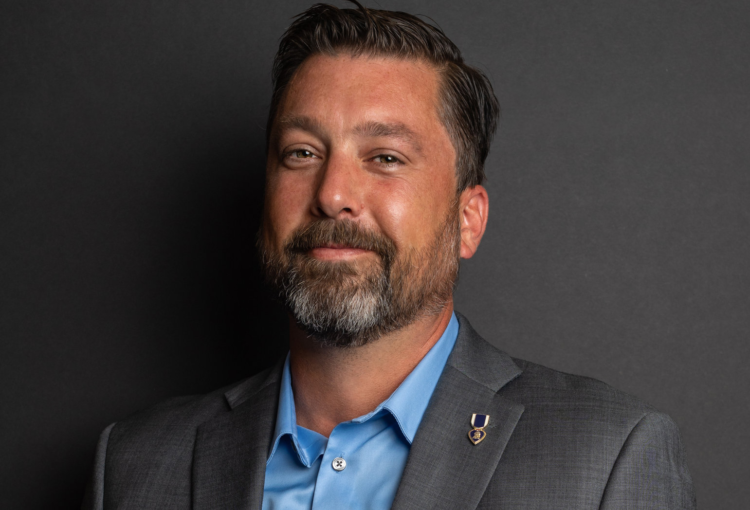Leadership is a journey in learning
that has no determined end point.

One of my earliest memories and lessons about leadership was when my high school JROTC instructor told the class that no one is born a leader, and that only Popeye the Sailor Man could say, “I yam what I yam an’ tha’s all I yam.”
My instructor was saying that, unlike Popeye, we could be anything we wanted to be, leaders in this case, if we worked hard enough. Leadership was a skill that could be learned through training and from following the examples of other leaders we admired. But, most importantly, he taught us that to be a good leader you also had to know how to follow, how to work as a team, and that knowing the standards wasn’t enough – you had to model them. Great leaders did not demand respect from their teams; they earned it.
In my junior year of high school, I enlisted in the NC National Guard and attended basic training during the summer before my senior year. While in basic training, I became a platoon guide. I was one of the youngest members of my platoon with responsibility for over 60 soldiers. Looking back, the tasks were simple, but many times we learn the most from the least, and those lessons have stuck with me and still ring true today.
I learned that communication and teamwork are the keys to leadership, and every time I messed up, which was a lot, those were the words my drill instructors would reinforce. Often, I was trying to do too much, trying to carry all the burden and that’s not the way a team works. I had squad leaders and team leaders to rely on, and by failing to properly communicate and delegate, allowing those other leaders to lead, I was failing as a leader. Now, nearly 26 years later, I’m still leading teams and can still hear those two words: communication and teamwork. Thankfully, I’m not hearing them while doing pushups in a sand pit.
After graduating basic training and high school, I went on to build track homes as a construction project manager for a nationwide builder. I soon found myself leading many teams of subcontractors, a team of superintendents, assistants, and general laborers. I had an average of 20-25 homes under construction at any given time in all phases of the process. The lessons I learned during that time were some of the most profound of my leadership journey. They built upon that foundation that was formed in high school – that leaders are developed and the development is never finished.
One of the greatest lessons I learned during my time as a project manager was that leadership is much more than telling people what, when, or how to do something. Leaders must model the standard they’ve set. Leaders must walk the walk, but they must also treat their people well. They set up their teams for success because it is achieved by the team. And when success is accomplished, good leaders give their teams the credit they’ve earned.
During this period of my career as a project manager, I developed two major misconceptions, having picked them up from bad leaders. The first was that everyone wanted to work for me because I had work. The second, if people didn’t follow my instructions and get the job done when I wanted and the way I wanted, they were not worth keeping around.
The people I picked these misconceptions up from were decent builders but very poor leaders. They could never keep anyone around for long. Their projects took longer than necessary to complete, plagued by blown budgets and surrounded by drama. I realize now that those leaders spent most of their time looking for help rather than completing projects.
It’s not enough to tell someone what we want, how to do a job, or negotiate and manage a budget. That is not communication. We must have what I call a three-part dialogue. First, explain the mission and goals; second, ask if they understand it and how they propose to complete the mission; and last, ask what support they need from you and others.
This dialog will achieve multiple results. It tells the team member that you value their ideas and trust them to think on their own. It allows you to evaluate where problems might arise and address them before they become issues. And, perhaps most importantly, it will create greater confidence for both the team and you.
Always remember, if the team fails it is because the leader failed the team. If a leader is willing to take credit for the success of the team, that leader must be the first to accept their part in the failure of the team.
Over the years, both as a civilian contractor and a North Carolina National Guardsman, I have been exposed to many great leaders. A couple of the lessons that stood out early were that good leaders show up first and leave last, and they ensure those being led are taken care first and always.
But along my leadership journey, I met a particular leader when I started Purple Heart Homes that was different and completely changed my perspective. A leader that I am honored to call mentor and friend. He taught me about the culture of leadership, and how a leader informs and sets the tone for the culture of an organization.
Of all the mentors I’ve had along the way, Dan has been the one with the most influence. He took me under his wing to impart his knowledge and experience into my journey. He made me a better leader, helped rid me of the bad habits and misconceptions I had developed as a contractor, and helped me realize that culture eats competence for breakfast. I learned that treating your team with respect while setting them up and supporting them to be successful makes all the difference. Trusting their instincts and allowing them room for failure can seem risky, but it will make them more willing to follow and support you.
Dan also helped me realize that standards around financial management are more than just important. They help you and the team know where you are and what you need to do to get where you’re going.
When you have a strong foundation of standard practices and times get tough, the basics become easy to follow and you can focus on the hard stuff. If the team knows the financial foundation is firmly in place and they are safe within the organization, the little disruptions will not seem so frightening. Additionally, when the culture of the organization is sound and everyone knows the mission, vision, and values, it is much easier to accept change whether desired or forced due to outside circumstances.
Now, after 14 years of leading a nationwide nonprofit, I have learned that the value of an organization’s culture is not just internal. It extends to all those you serve as well, and for Purple Heart Homes that includes the volunteers we serve alongside, the donors, and partners that all support our mission.
I no longer see myself as a leader of a team, simply giving instructions, communicating plans, and managing budgets. Rather, I see myself as a servant leader, one who is there to support the team, guiding others on their own journey to be and become great leaders themselves. As a CEO, I believe my role is now more about opening discussions, receiving and supporting ideas, and cultivating an environment where my team can be their best and realize our collective dreams and goals.
Workplace culture is a leader’s first and primary responsibility.
I believe that Kevin W. McCarthy in his book “Chief Leadership Officer” said it best. A CEO is about everyone supporting them in achieving their goals. A Chief Leadership Officer is about supporting everyone to be successful and achieve their life goals through the mission. When we are successful, everyone should win, not just the person at the top. It may seem risky to let go of the reins of control, but I have learned that the one who holds the reins is not the leader. You cannot drive someone to submission or to achieve goals, but you can and must encourage and inspire people.
In today’s challenging times, we see and hear about countless companies with a shortage of workers. I wholeheartedly believe this is a leadership issue not a workforce issue. People are fed up with leaders and managers who believe they sit in a position of prominence, on a high horse with a whip. People desire and deserve to be treated with dignity and respect.
It all begins with the leadership and the culture they establish. My simple definition of culture is this: the worst thing you accept. If showing up late or leaving early without completing the day’s task, poor attitude towards customers, sexual harassment towards co-workers, disrespect towards peers, or drinking on the job are acceptable, then you have a bad culture, and no one will want to work in that environment. Worse yet is the leader who knows about these types of issues and does nothing about them. This undermines a leader’s respect and organization’s ability to be successful more than any other concern.
In the words of Richard Branson, “Train people well enough so they can leave. Treat them well enough so they don’t want to.”
It’s not always about the money. In a changing society, leaders must also change. We must embrace the change and not see it as a risk for failure; rather, we must see it as an opportunity to continue the journey in supporting people to be their best and achieve our collective goals. Vicki, another one of my mentors, taught me to first see the good in people, not to be skeptical of their abilities, not to question their motives but to accept that they too want to be successful. And ask myself, how can I help them on their journey just like so many have helped me.
Change is inevitable, and growth requires getting comfortable being uncomfortable. For me it was Dan, Vicki, and so many others who brought that first lesson full circle. Don’t hold onto the reins. Take the risk, step out of your comfort zone, and take a chance in supporting the future by developing the leaders around you. The charge of a true leader is to empower teams through strong culture and to invest in and develop other leaders.
Be worthy of being followed; be focused on doing the right thing to support the people around you and those you are charged with serving as a leader. Don’t worry about being replaced, concern yourself with whether you are the type of leader others want to emulate.
John Gallina, CEO and CoFounder of Purple Heart Homes
_______
Born, raised, and residing in Statesville, North Carolina, John Gallina made his first career move by joining the National Guard, then later becoming a General Contractor. He was deployed to Iraq during Operation Iraqi Freedom II, where he sustained injuries and received the Purple Heart for his actions in combat.
Once he returned to civilian life, John refocused his career back to the construction industry before co-founding Purple Heart Homes in 2008, a national 501(c)3 public charity. He was featured on the cover of TIME magazine in August of 2011 with 4 other Iraq and Afghanistan Veterans as being part of The New Greatest Generation for bringing their leadership lessons home, where we need them most. John is the co-author of Wounded Homecoming: The Uphill Journey of Wounded Veterans from Battlefield to Homefront.
John enjoys reading, working on classic cars, and spending time with his wife, Cori-Anne, and their three children. John is also a member of Western Avenue Baptist Church, Rotary International, past member of Vistage International, and serves on several local charity boards, such as the Statesville Housing Authority (chairman emeritus), Statesville Chamber of Commerce, and Piedmont Veterans Assistance Council. Recipient of 2011 Carolina Freedom Foundation award, the 2012 Stonewall Jackson award, 2012 Joe’s Hero award, 2013 The President’s Volunteer Service Award, and the 2014 Duke Energy Citizenship and Service award.





